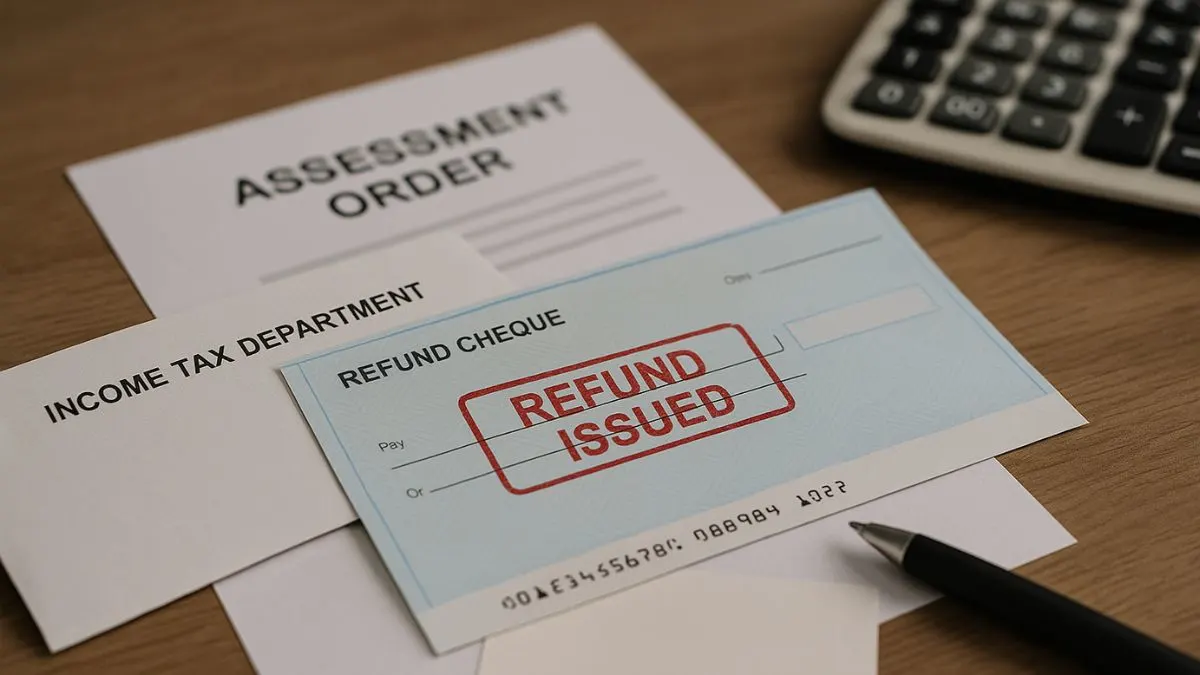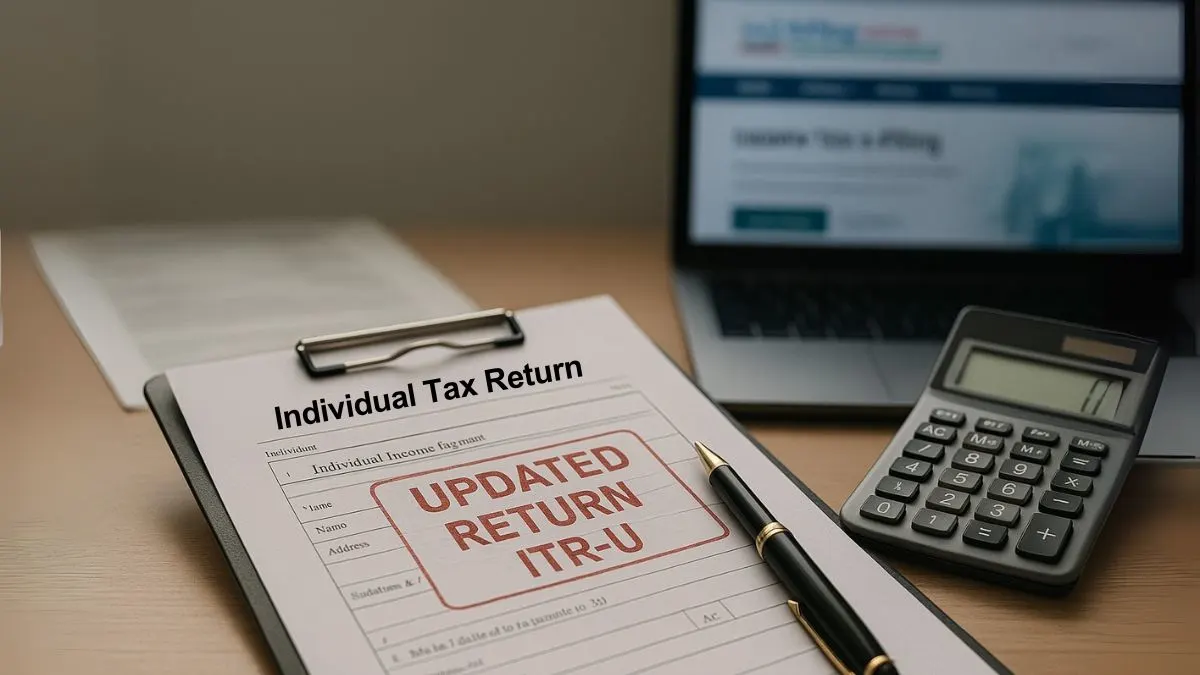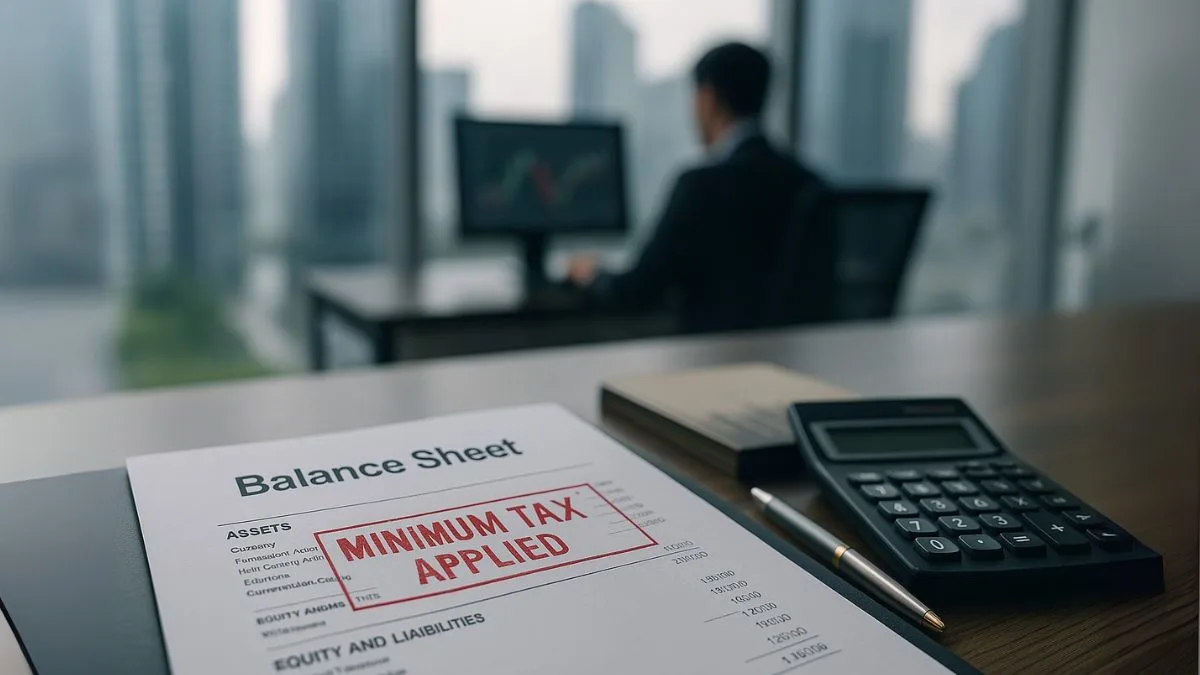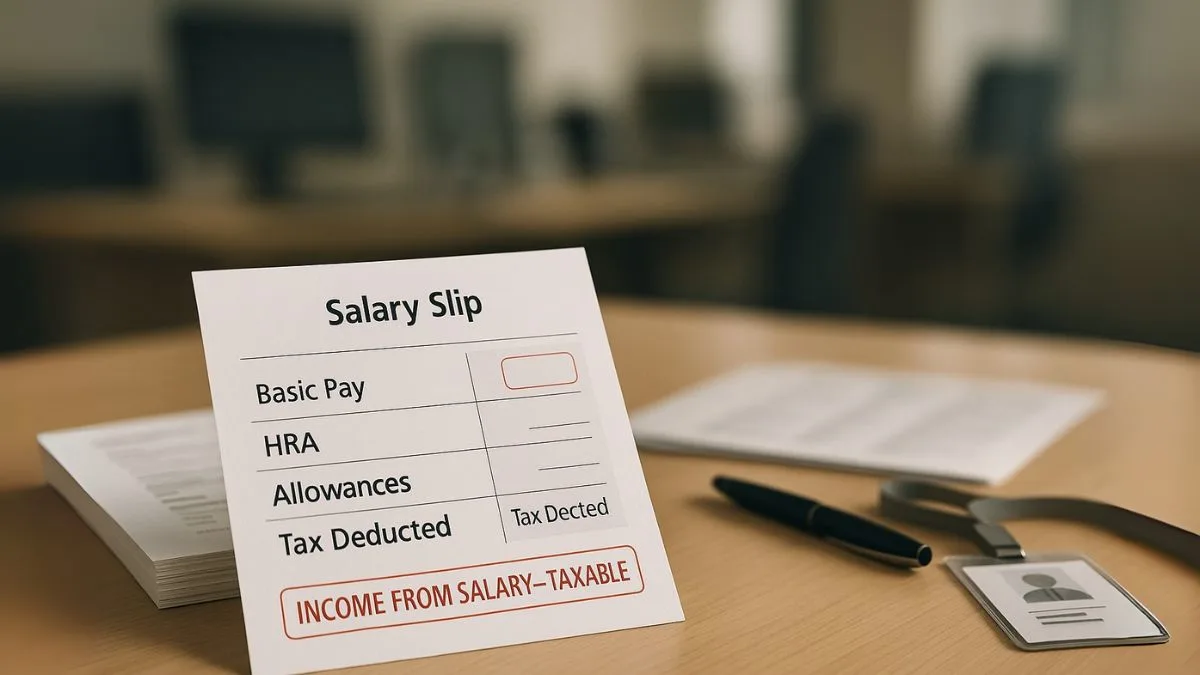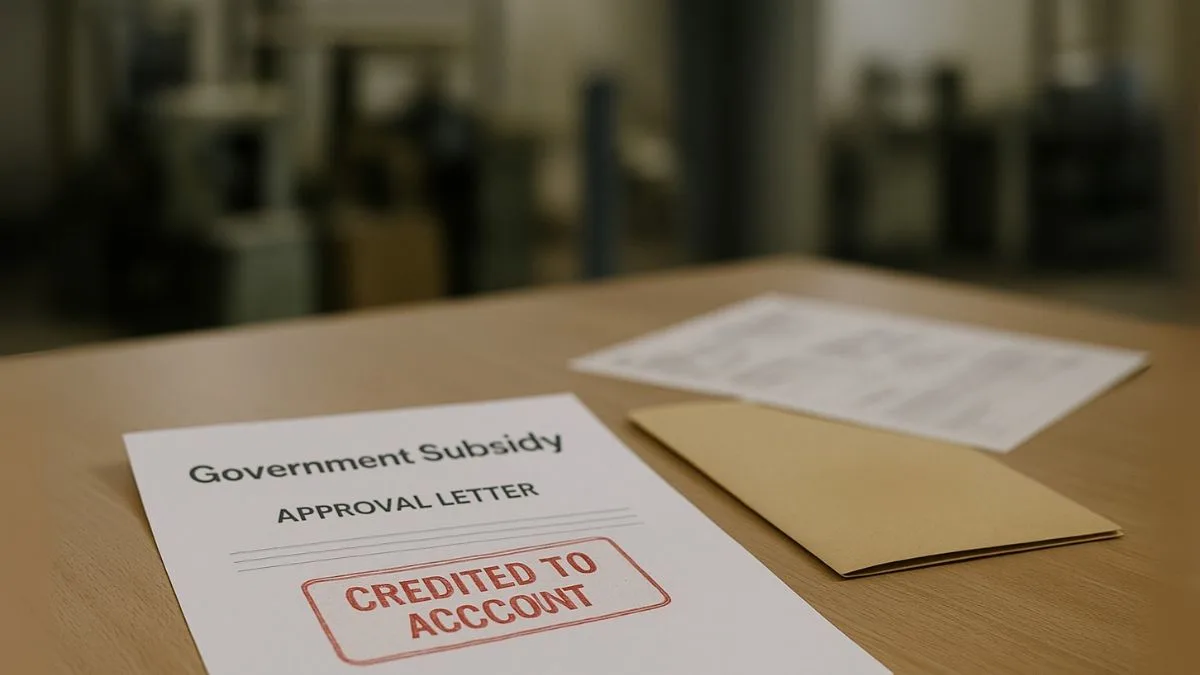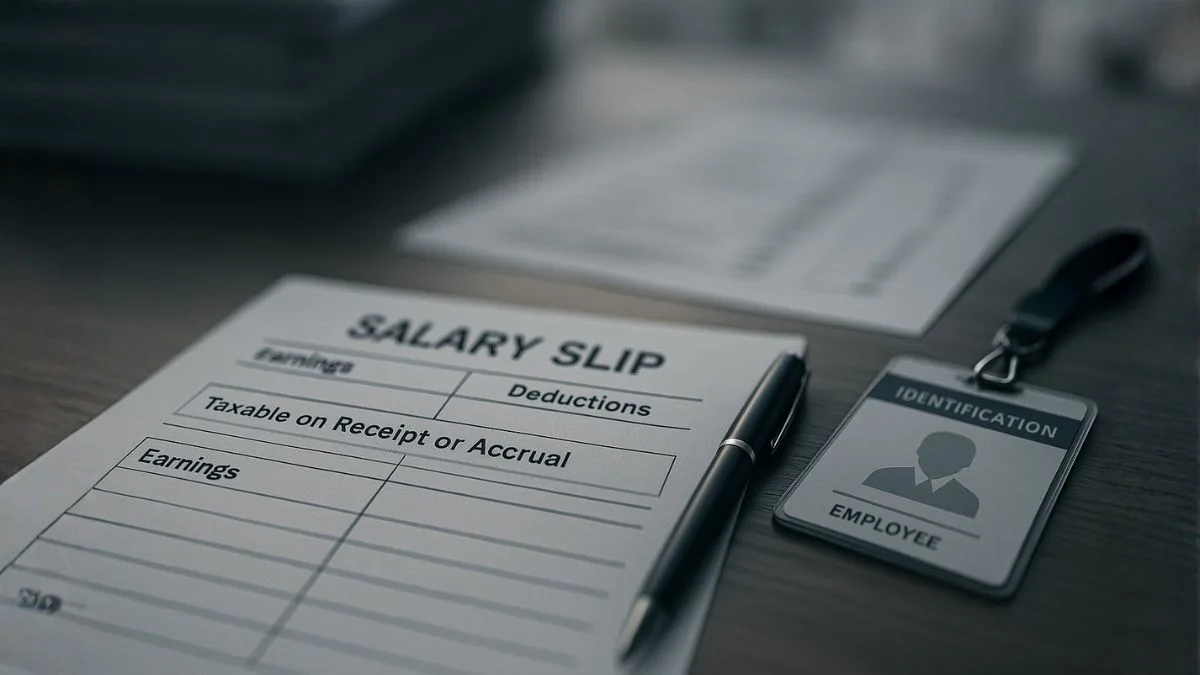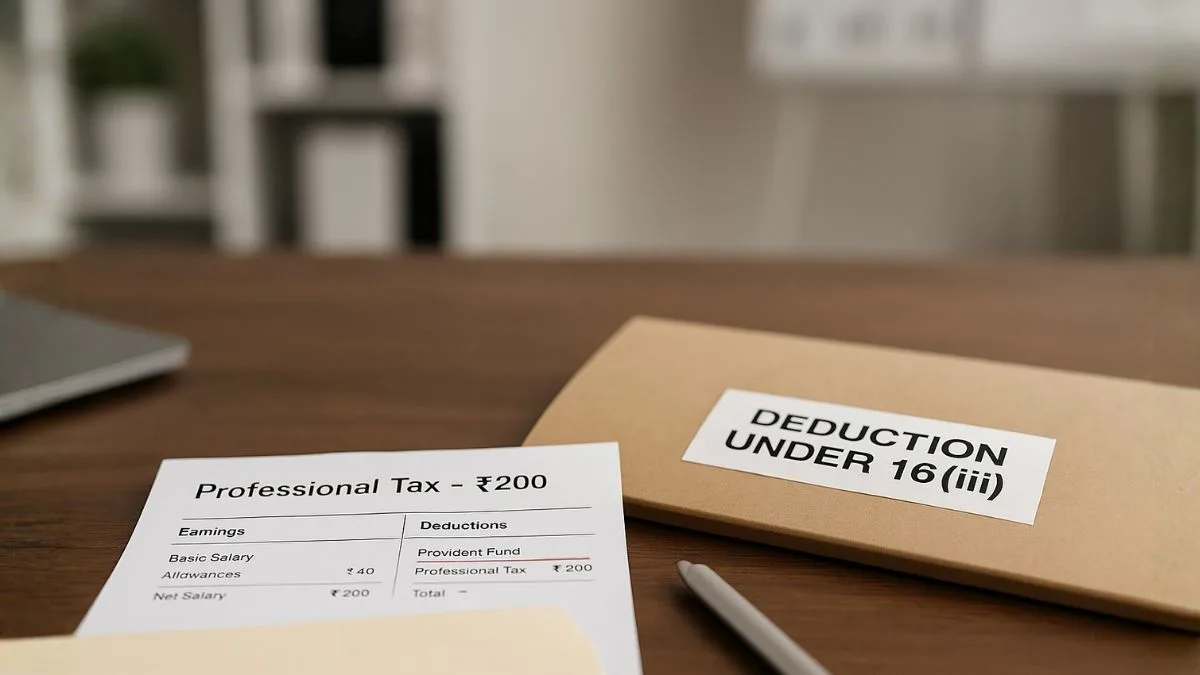
If you earn a salary or run your own professional practice, there’s one small tax that quietly shows up on your payslip — Professional Tax.
It may look insignificant, yet it affects your income-tax calculation directly.
Unlike Income Tax, which is a central levy, professional tax is imposed by state governments. Each state collects it to fund local development. But here’s the interesting bit — even though it’s a state tax, the Income Tax Act lets you claim a deduction for it.
Let’s unpack what this tax really means, who pays it, how much it costs, and why Section 16(iii) makes it worth claiming every year.
What Is Professional Tax?
Professional Tax is a state-level levy on individuals who earn income through salary, profession, trade, or business.
It applies to salaried employees, freelancers, doctors, lawyers, chartered accountants, & business owners alike.
The rate depends on your state’s slab, because each state has its own Professional Tax Act.
Under Article 276(2) of the Constitution of India, the maximum you can be charged is ₹ 2,500 per financial year — so it never becomes a heavy burden.
Professional Tax and the Income Tax Act
Even though it’s a state tax, professional tax directly influences your income-tax computation.
Under the Income Tax Act, 1961, whatever professional tax you pay can be deducted from your gross salary while calculating taxable income.
This deduction falls under Section 16(iii).
So, if ₹ 2,400 is deducted from your payslip during the year, you can subtract ₹ 2,400 from your salary before tax calculation — reducing your taxable income & overall liability.
Also Read: TDS on Professional and Technical Services
Section 16(iii) — The Exact Provision
Here’s what the law says:
“The tax on employment (commonly known as professional tax) paid by the assessee shall be allowed as a deduction from the income chargeable under the head ‘Salaries’.”
In short:
If you’re an employee and your employer deducts professional tax, you can claim that amount as a straight deduction in your ITR.
Who Pays Professional Tax?
Both employees & self-employed professionals must pay it — but the process differs:
- Salaried Employees:
The employer deducts professional tax from your salary every month & deposits it with the state government. - Self-Employed / Freelancers:
You must register under your state’s Professional Tax Act and pay it yourself — usually twice a year or annually.
So whether you work for someone or for yourself, you contribute based on your income bracket.
Typical Professional Tax Rates in India
|
State |
Monthly Income (₹) |
Monthly Professional Tax (₹) |
|
Maharashtra |
Up to 7,500 |
Nil |
|
7,501 – 10,000 |
175 |
|
|
Above 10,000 |
200 |
|
|
Karnataka |
Up to 15,000 |
Nil |
|
Above 15,000 |
200 |
|
|
Tamil Nadu |
Up to 21,000 |
Nil |
|
21,001 & above |
209 – 295 |
|
|
West Bengal |
Up to 10,000 |
Nil |
|
Above 10,000 |
110 – 200 |
Each state notifies its own slab; your employer follows that schedule while deducting from salary.
Also Read: Special Provisions for Trade, Professional and Similar Associations
How It Shows Up in Your Income Tax Return
For salaried taxpayers, Section 16(iii) allows deduction of the actual amount paid (up to ₹ 2,500).
A simple illustration:
- Gross Salary: ₹ 7,00,000
- Less Standard Deduction: ₹ 50,000
- Less Professional Tax (Section 16(iii)): ₹ 2,400
- Net Taxable Salary: ₹ 6,47,600
So you save tax on ₹ 2,400 — small, yes, but entirely legitimate.
Professional Tax for Employers
Employers must handle two registrations:
- PTRC – Professional Tax Registration Certificate (for deducting employees’ tax)."
- PTEC – Professional Tax Enrolment Certificate (for the employer’s own liability).
They must deposit deductions on time. Any delay can trigger penalties or interest under the state’s act.
Professional Tax in ITR Filing
When you file your Income Tax Return, mention this deduction correctly:
- ITR-1 (Sahaj): Shown under Salary → Deductions under Section 16(iii).
- ITR-2 / ITR-3: Appears within the salary computation or business income schedule for self-employed individuals.
This ensures the tax department recognizes your deduction automatically.
Is Professional Tax Under 80C or 16(iii)?
Here’s a common confusion:
Many people think professional tax falls under Section 80C. It doesn’t.
Section 80C covers investments like PPF, LIC, & ELSS.
Professional tax is purely an employment-related deduction under Section 16(iii) — separate & additional to 80C.
Also Read: Professional Income: Taxation for Doctors, Lawyers, Accountants, and More
Who Is Exempt
Certain groups don’t have to pay professional tax, depending on state rules:
- Members of the Armed Forces.
- Senior Citizens (in several states).
- Persons with Disabilities.
- Individuals earning below the minimum threshold set by the state.
Always check your state’s latest exemption list before payment.
How to Claim the Deduction
- Employees: Verify that your Form 16 mentions the deduction.
- Self-Employed: Keep the state payment challan as proof.
- Enter the amount under Section 16(iii) while filing your ITR.
- Retain receipts in case of future assessment.
Simple documentation now prevents unnecessary queries later.
Example — Full Computation
Riya works in Maharashtra & earns ₹ 9 lakh per year."
Her employer deducts ₹ 2,500 as professional tax.
Computation:
- Gross Salary = ₹ 9,00,000
- Less Standard Deduction = ₹ 50,000
- Less Professional Tax (Section 16(iii)) = ₹ 2,500
→ Net Taxable Salary = ₹ 8,47,500
That’s ₹ 2,500 less taxable income — not huge, but still your rightful deduction.
Professional Tax vs Income Tax
|
Basis |
Professional Tax |
Income Tax |
|
Authority |
State Government |
Central Government |
|
Applicability |
Based on employment/profession |
Based on total income |
|
Deductibility |
Deductible under Section 16(iii) |
Payable per tax slabs |
|
Limit |
₹ 2,500 p.a. (max) |
Depends on income slab |
|
Payment & Return |
Paid to state authorities |
Filed with Income Tax Dept. |
Different authorities, but one affects the other through that neat little deduction.
Also Read: The Tax Exemption Rule for Professional Institutions
Key Takeaways
- Professional Tax = State tax on income from salary, profession, or business.
- Applies to employees and self-employed individuals.
- Deductible from salary under Section 16(iii) of the Income Tax Act.
- Maximum deduction: actual amount paid (≤ ₹ 2,500).
- Always check your state slab & exemptions before filing.
Conclusion
It may look like a tiny deduction on your payslip, but professional tax keeps you compliant with both state and central laws.
Knowing how it interacts with Section 16(iii) ensures you claim what’s rightfully yours & don’t leave even ₹ 2,500 on the table.
Whether you’re a salaried employee or a freelancer, remember: small deductions add up — and this one’s built into the law for your benefit.
Still confused about how to claim Professional Tax deduction or calculate your taxable income?
👉 Visit CallMyCA.com — our Chartered Accountants will help you file correctly, claim every eligible deduction (including Section 16(iii)), and maximize your refund with complete accuracy.

